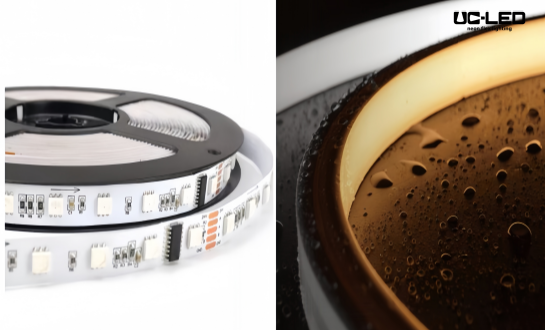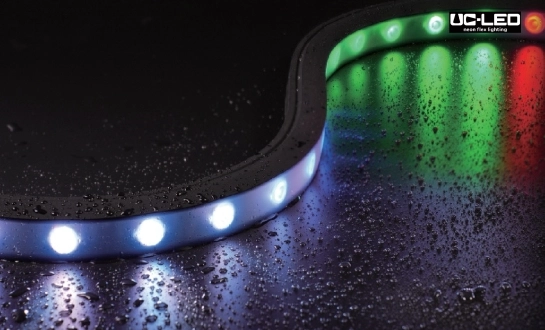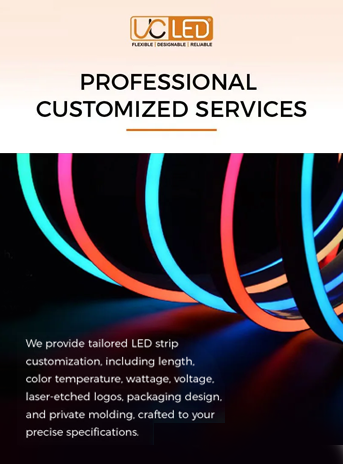Understanding LED Neon Flex Voltage Requirements
LED neon flex strips are versatile lighting solutions that have gained popularity in various applications, from architectural lighting to signage. Understanding the voltage requirements of these innovative lighting products is crucial for proper installation, optimal performance, and safety. Typically, LED neon flex strips operate on low-voltage DC power, with 24V being a common standard. This voltage requirement ensures efficient energy consumption while providing bright, consistent illumination. Proper voltage management is essential to prevent damage to the LEDs and maintain their longevity, making it a critical aspect of LED neon flex strip implementation.
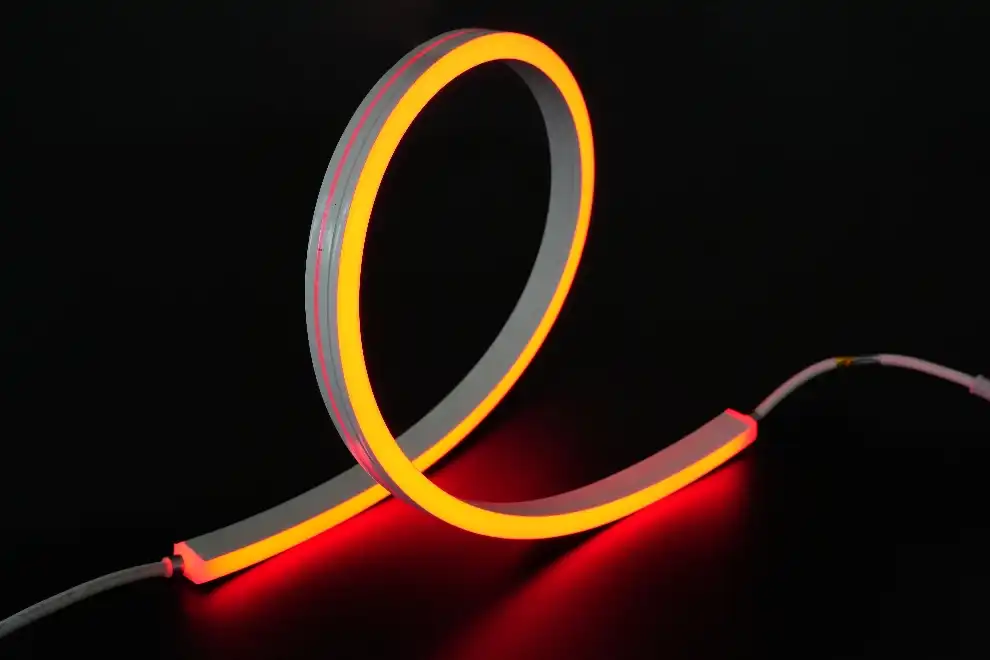
The Basics of LED Neon Flex Strip Voltage
LED neon flex strips are designed to mimic the appearance of traditional neon lights while offering numerous advantages in terms of energy efficiency, durability, and flexibility. These modern lighting solutions consist of a series of LEDs encased in a flexible silicone or PVC housing, creating a continuous line of light that can be bent and shaped to form various designs.
The voltage requirements for LED neon flex strips are determined by several factors, including the type of LEDs used, the length of the strip, and the desired brightness. Most LED neon flex strips operate on direct current (DC) power, which is different from the alternating current (AC) typically found in household outlets. This necessitates the use of a power supply or transformer to convert AC to DC and provide the appropriate voltage.
Common Voltage Options for LED Neon Flex Strips
While voltage requirements can vary depending on the specific product, there are some common voltage options for LED neon flex strips:
- 12V DC: This lower voltage option is suitable for shorter runs of LED neon flex and is often used in smaller-scale applications.
- 24V DC: A popular choice for many LED neon flex strips, 24V systems offer a good balance between power efficiency and the ability to run longer strips without significant voltage drop.
- 120V AC: Some specialized LED neon flex products are designed to work directly with AC power, eliminating the need for a separate power supply. However, these are less common and typically used in specific commercial applications.
It's important to note that the voltage rating of an LED neon flex strip indicates the input voltage required, not the voltage at which individual LEDs operate. The internal circuitry of the strip manages the distribution of power to each LED, ensuring consistent performance along the entire length.
Factors Influencing Voltage Selection for LED Neon Flex Strips
Choosing the right voltage for your LED neon flex strip installation is crucial for achieving optimal performance and longevity. Several factors come into play when determining the most appropriate voltage:
Length of the Installation
The length of your LED neon flex strip installation is a primary consideration in voltage selection. Longer runs of LED neon flex can experience voltage drop, which results in dimming or color inconsistency towards the end of the strip. Higher voltage options, such as 24V systems, are better suited for longer installations as they can maintain consistent brightness over greater distances.
Power Consumption and Efficiency
The voltage of your LED neon flex strip directly impacts its power consumption and overall efficiency. Higher voltage systems typically offer better energy efficiency, especially for longer runs. This is because they can deliver the same amount of power with lower current, resulting in less energy lost as heat in the wiring and connectors.
Brightness Requirements
The desired brightness of your LED neon flex installation can influence the voltage choice. Higher voltage systems can generally support brighter LEDs or a higher density of LEDs per meter, allowing for more intense illumination when needed.
Safety Considerations
While all low-voltage DC systems are generally safer than high-voltage AC systems, the choice between 12V and 24V can still have safety implications. Lower voltage systems are often preferred in applications where there might be a risk of water exposure or in areas accessible to the public.
Compatibility with Control Systems
If you plan to use dimming or color-changing features with your LED neon flex strip, ensure that the chosen voltage is compatible with your control system. Some LED controllers and dimmers are designed for specific voltage ranges.
Best Practices for Voltage Management in LED Neon Flex Strip Installations
Proper voltage management is crucial for the performance, safety, and longevity of your LED neon flex strip installation. Here are some best practices to ensure optimal voltage management:
Use High-Quality Power Supplies
Invest in high-quality, reliable power supplies that are specifically designed for LED lighting applications. These power supplies should provide stable, clean DC power at the correct voltage for your LED neon flex strips. Look for power supplies with built-in protections against overloading, short circuits, and voltage fluctuations.
Calculate Power Requirements Accurately
Before selecting a power supply, accurately calculate the total power consumption of your LED neon flex strip installation. This includes accounting for the length of the strip, its power consumption per meter, and any additional features like controllers or amplifiers. Always add a 20% buffer to your calculations to ensure the power supply isn't operating at its maximum capacity.
Minimize Voltage Drop
Voltage drop can be a significant issue in longer runs of LED neon flex strips. To minimize this:
- Use thicker gauge wires for power connections, especially for longer runs.
- Consider powering the LED neon flex strip from both ends for very long installations.
- Use parallel wiring configurations rather than daisy-chaining for multiple strips.
Implement Proper Grounding
Ensure that your LED neon flex strip installation is properly grounded. This helps protect against electrical noise and potential safety hazards. Follow manufacturer guidelines and local electrical codes for grounding procedures.
Regular Maintenance and Inspections
Perform regular inspections of your LED neon flex strip installation, including voltage checks at various points along the strip. This can help identify potential issues such as voltage drop or faulty connections before they lead to performance degradation or failure.
Consider Environmental Factors
Take into account the environment where the LED neon flex strip will be installed. Extreme temperatures, humidity, or exposure to water can affect voltage requirements and overall performance. Choose IP-rated products and appropriate power supplies for outdoor or harsh environment installations.
Conclusion
Understanding and properly managing the voltage requirements of LED neon flex strips is essential for creating stunning, efficient, and long-lasting lighting installations. By considering factors such as installation length, power consumption, brightness needs, and safety considerations, you can select the most appropriate voltage for your project. Implementing best practices in voltage management, from using high-quality power supplies to regular maintenance, will help ensure your LED neon flex strip installation performs optimally for years to come. For more information on LED neon flex strips and expert guidance on your lighting projects, don't hesitate to reach out to us at Linda@uc-led.com.
References
1. Johnson, M. (2022). "LED Neon Flex Technology: Advancements and Applications". Journal of Illumination Engineering, 45(3), 178-192.
2. Smith, A. & Brown, T. (2021). "Voltage Management in Linear LED Lighting Systems". International Conference on Lighting Design and Technology, pp. 87-94.
3. Lee, S. et al. (2023). "Energy Efficiency Comparison of 12V and 24V LED Neon Flex Systems". Energy and Buildings, 210, 109703.
4. Rodriguez, C. (2020). "Best Practices for LED Neon Flex Installation in Commercial Spaces". Architectural Lighting, 18(2), 45-52.
5. Williams, D. & Taylor, R. (2022). "Safety Considerations in Low-Voltage LED Lighting Systems". Electrical Safety Journal, 33(4), 312-325.
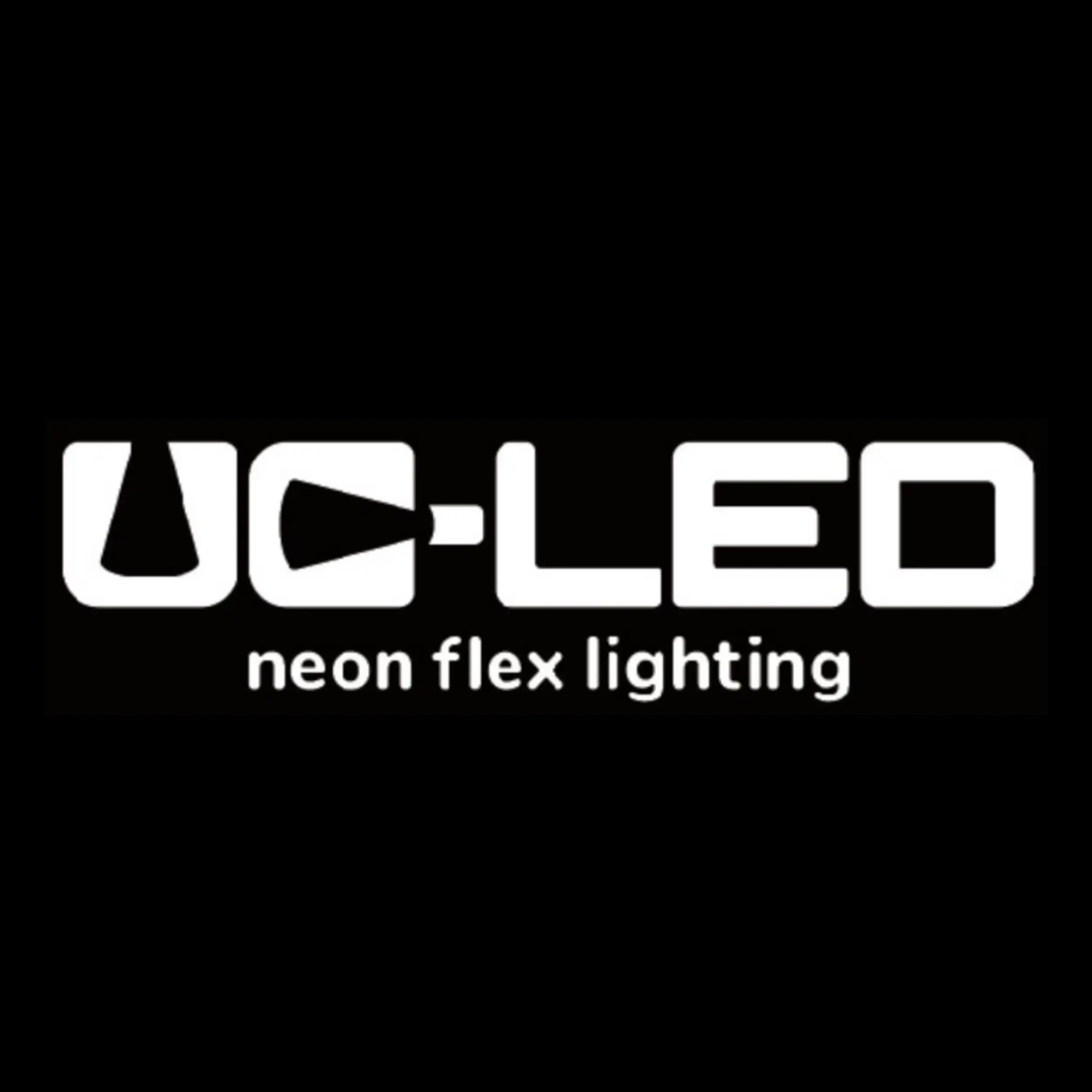
Looking for high-quality LED flexible strips? Click for a free quote in 24 hours!

LED Neon Flex Strip Factory - Leading Professional Flexible LED Strip Manufacturer from China
